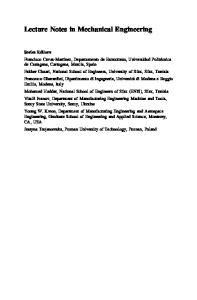Fiber pullout processes and mechanisms of a carbon fiber reinforced silicon nitride ceramic composite
- PDF / 881,038 Bytes
- 7 Pages / 612 x 828 pts Page_size
- 49 Downloads / 373 Views
Details of fiber pullout processes and mechanisms are addressed for a carbon fiber reinforced silicon nitride ceramic composite. The energy for fiber pullout, ypo, is experimentally measured by the work-of-fracture technique using test specimens with a circumferential notch. A precise determination of the distribution of pullout fibers combined with the experimental results of the pullout energy provides an important insight into the micromechanical processes and mechanisms of the composite fracture. Various energy dissipation processes associated with the composite fracture, the frictional interface shear stress, the Weibull modulus of the reinforcing fibers, and composite designs for improved toughening are discussed.
I. INTRODUCTION The mechanical properties of monolithic ceramics can be enhanced through the composite approach.1 A brittle matrix combined with fibers produces a material with improved material properties, yielding the composite with a resistance to failure considerably greater than that of monolithic ceramics.2 Toughening is achieved by increasing the fracture energy of composites over what can be attained in the monolithic ceramics.3 The failure of fiber-reinforced brittle matrix composites occurs through several fundamental microfracture processes4'5 such as first matrix cracking,6"9 interface debonding,10"12 fiber bridging,6'7'13'14 fiber failure, fiber pullout,15-18 etc. Under applied loads, the matrix crack starts propagation at the most critical flaw in the matrix, and then meets the matrix/fiber interface. At some critical stress level, by increasing the applied load, the shear stresses at the interface exceed the interfacial shear strength to allow interfacial debonding and intact fiber bridging.19 After the complete failure of the composite, it shows fibers protruding from the matrix crack plane. This process is referred to as the fiber pullout. The fracture energy consumption accompanied by the frictional fiber pullout process is extremely large.16'18'20 Such frictional resistance is attained through either physical contact or residual stresses developed at the matrix/fiber interface.12 The nature of fiber/matrix interface, which is weak enough to debond and strong enough for stress transfer, plays an important role in controlling the fiber bridging and the subsequent fiber pullout processes.13 The interfaces blunt the crack-tip, significantly alter cracking patterns, yield extensive intact fiber bridging and fiber pullout, and then toughen the composite.4"7'12'13-21'22 In conventional fracture mechanics test specimens, such as the compact tension and the single edge-notched J. Mater. Res., Vol. 7, No. 10, Oct 1992
http://journals.cambridge.org
Downloaded: 14 Mar 2015
bend bar, the failure mode is extremely complex, mainly delamination fractures which occur parallel to the reinforcing fibers, in addition to dominant buckling in the compressive stress zone.2'20'23'24 Accordingly, the several experimental techniques of the fracture mechanics and the continuum mechanics cease their usef
Data Loading...









